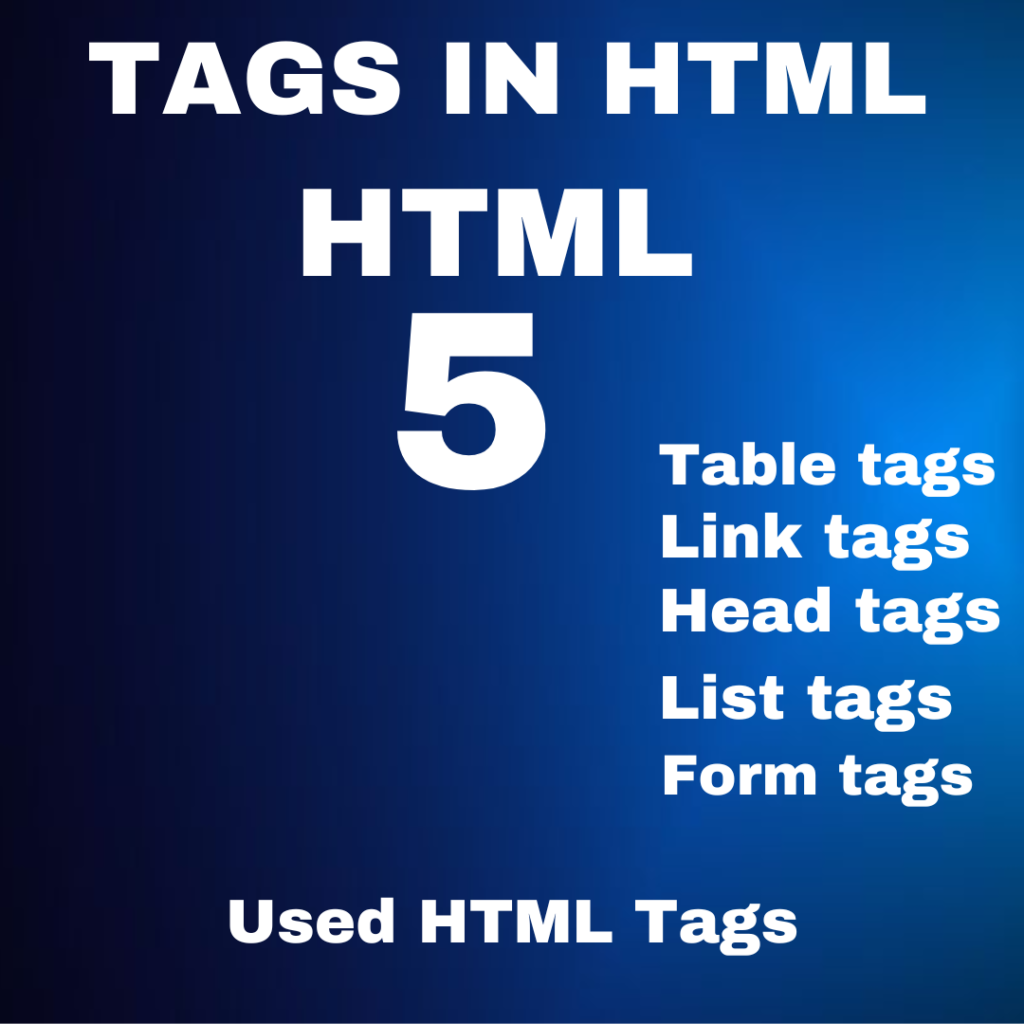HTML Tags

HTML5 Tags
“HTML5 Tags empower creativity, fostering positive development and innovation.” HTML5 Tags are used to structure content and provide information about its meaning and purpose. Here are some commonly used HTML Tags:
- <html>: This tag defines the beginning and end of an HTML document.
- <head>: This tag contains information about the document, such as the title and links to stylesheets.
- <body>: This tag contains the visible content of the document.
- <h1> to <h6>: These tags define headings of different levels, with <h1> being the largest and <h6> the smallest.
- <p>: This tag defines a paragraph of text.
- <a>: This tag defines a hyperlink, with the href attribute specifying the URL to link to.
- <img>: This tag defines an image, with the src attribute specifying the image file to display.
- <ul> and <ol>: These tags define unordered and ordered lists, respectively.
- <li>: This tag defines a list item within a list.
- <div>: This tag is used to group elements together for styling purposes.
- <span>: This tag is used to apply styling to a specific section of text.
- <table>: This tag is used to create a table, with <tr> defining a row, <th> defining a header cell, and <td> defining a regular cell.
There are many other HTML Tags available for different purposes, but these are some of the most commonly used ones.
Define HTML5 tags
One of the fundamental HTML5 tags is the <html> tag. It encapsulates the entire content of the document and serves as the root element. Inside the <html> tag, you’ll find two main sections: <head> and <body>. The <head> section contains meta-information about the document, such as the title, character set, and links to external stylesheets. The <body> section holds the actual content visible to users.
The <head> section often includes the <title> tag, which specifies the title of the webpage displayed on the browser tab. The title is crucial for search engine optimization and user experience.
The <body> section is where the main content resides. Various tags define different types of content within the body. For instance, the <h1> to <h6> tags represent heading levels, with <h1> being the highest and <h6> the lowest. Paragraphs are defined by the <p> tag, and line breaks are created with the <br> tag.
To structure content, HTML provides tags such as <div> and <span>. The <div> tag is a block-level container that groups other elements, while the <span> tag is an inline container. These tags are essential for applying styles and organizing the layout of a webpage.
Links are a fundamental feature of the web, and HTML uses the <a> tag to create hyperlinks. The href attribute within the <a> tag specifies the destination URL. Additionally, images are inserted using the <img> tag, with the src attribute indicating the image source.
Lists in HTML are created using the <ul> (unordered list) and <ol> (ordered list) tags. List items are represented by the <li> tag. Forms, which are crucial for user interaction, are constructed with the <form> tag, and input fields are defined by tags like <input>, <textarea>, and <select>.
HTML also supports multimedia elements. The <audio> and <video> tags enable the inclusion of audio and video content, respectively. The src attribute within these tags specifies the source file.
As web development evolved, HTML5 emerged as the latest version of HTML, introducing new features and improvements. HTML5 includes native support for audio and video, introduces semantic tags like <article>, <section>, and <nav> for better document structure, and provides the powerful <canvas> tag for drawing graphics.
In conclusion, HTML is the backbone of web development, providing a standardized way to structure and present content on the internet. HTML tags play a crucial role in defining the elements and layout of a webpage, making it accessible and visually appealing to users. Whether you’re a beginner or an experienced developer, a solid understanding of HTML is essential for creating effective and well-structured web content.


